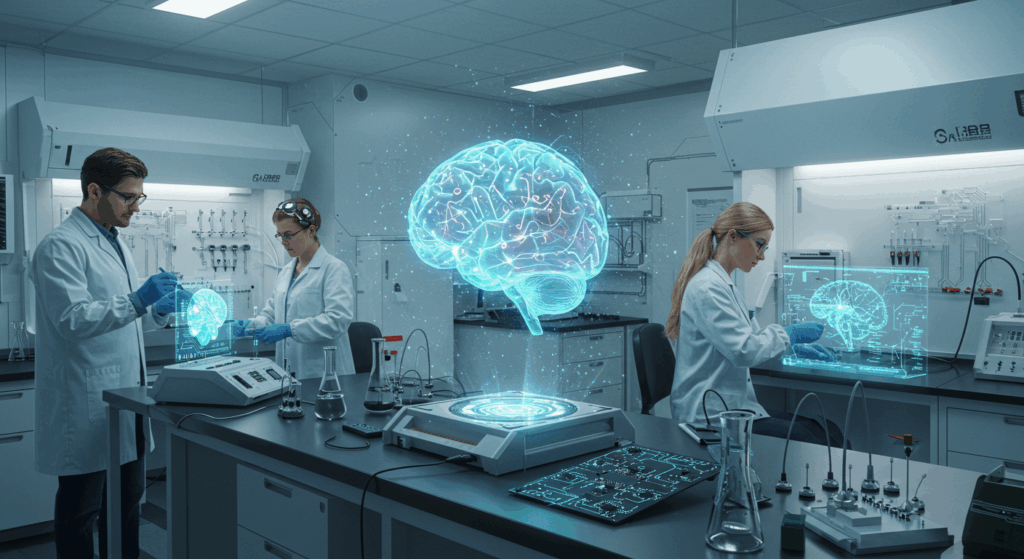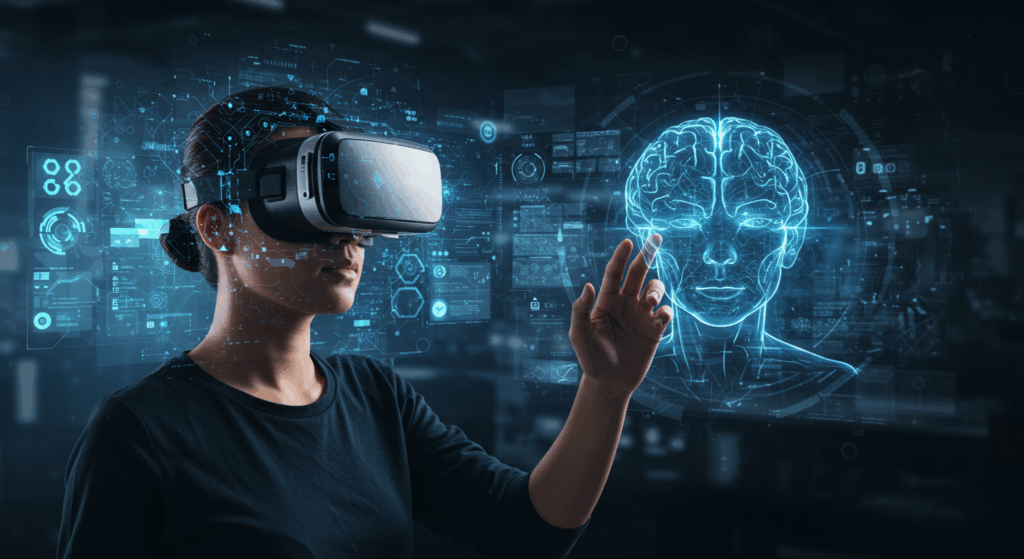Brain-Computer Interfaces 2025: The Next Human Evolution

What if you could control your devices, communicate, or even restore lost abilities with just a thought? In 2025, brain-computer interfaces (BCIs) are turning this sci-fi dream into reality, marking what could be the next step in human evolution. Companies like Neuralink, Synchron, and Blackrock Neurotech are pushing the boundaries of neuroscience, connecting the human brain directly to technology in ways that could redefine how we live, work, and interact. But with this groundbreaking innovation comes a wave of ethical and societal questions: Are we enhancing humanity, or risking our very essence? At NovexaHub, we’re exploring this transformative technology in our science category, diving into the state of BCIs in 2025, their potential, and what they mean for our future. Ready to peek into the mind of tomorrow?
The State of BCIs in 2025: A Technological Leap Forward

Brain-computer interfaces, which allow direct communication between the brain and external devices, have made staggering progress by 2025. Neuralink, led by Elon Musk, has been at the forefront, with its first human trials starting in 2024. By 2025, Neuralink reports that its implant—smaller than a coin and inserted via robotic surgery—has enabled a paralyzed patient to control a computer cursor and type using only their thoughts. Synchron, a competitor, has gone further, implanting its Stentrode device in over 10 patients by 2025, allowing them to send text messages and control smart home devices without invasive brain surgery. Blackrock Neurotech’s Utah Array, used in research for years, is now being adapted for commercial use, helping patients with ALS (amyotrophic lateral sclerosis) regain communication abilities. These devices work by translating neural signals into digital commands, essentially turning thoughts into actions. In 2025, BCIs are no longer theoretical—they’re here, and they’re already changing lives.
How BCIs Work: The Science of Mind-Machine Connection

The technology behind BCIs is as fascinating as it is complex. Most systems, like Neuralink’s, involve implanting electrodes into the brain to record or stimulate neural activity. Neuralink’s device, for instance, has over 1,000 electrodes, each thinner than a human hair, capable of detecting signals from individual neurons. These signals are then sent wirelessly to a computer, where AI algorithms decode them into commands—like moving a cursor or typing a word. Synchron’s approach is less invasive: its Stentrode device is inserted through a blood vessel in the neck, positioning electrodes near the brain without opening the skull. On the research front, advancements in non-invasive BCIs—like EEG headsets—are gaining traction, though they lack the precision of implants. In 2025, the biggest challenge isn’t just capturing brain signals but interpreting them accurately—AI plays a crucial role here, learning to map neural patterns to specific actions. As Musk puts it, “We’re building a bridge between the human mind and the digital world,” and that bridge is stronger than ever.
Transforming Lives: Medical Breakthroughs and Beyond

The most immediate impact of BCIs in 2025 is in healthcare. For patients with paralysis, BCIs are a game-changer: Neuralink’s first human trial patient, a quadriplegic, can now play digital chess and send emails using only their thoughts. Synchron’s technology has allowed ALS patients to communicate again, restoring a sense of independence. Beyond motor disabilities, BCIs are being explored for mental health—Blackrock Neurotech is testing implants to treat severe depression by stimulating specific brain regions, with early results showing promise. But the applications don’t stop at medicine. In 2025, companies are eyeing consumer markets: imagine gamers using BCIs to control avatars with their minds, or professionals boosting productivity by “thinking” commands to their computers. Meta, for instance, is rumored to be developing a BCI headset for its metaverse, aiming to make virtual reality more immersive. BCIs are no longer just tools for the disabled—they’re poised to enhance the lives of the able-bodied, too.
The Ethical Frontier: Are We Ready for This Revolution?

As BCIs become more mainstream in 2025, they raise profound ethical questions. Privacy is a major concern: if a device can read your thoughts, who has access to that data? Neuralink has promised strict security measures, but experts warn that brain data could be the ultimate target for hackers—imagine a future where your innermost thoughts are stolen or sold. There’s also the risk of inequality: BCIs are expensive (Neuralink’s implant costs tens of thousands of dollars), potentially creating a divide between those who can afford cognitive enhancements and those who can’t. Philosophers like Nick Bostrom argue that BCIs could alter what it means to be human, blurring the line between natural and artificial intelligence. On the darker side, governments or corporations could use BCIs for surveillance or control—China’s reported interest in “neuro-warfare” has already sparked alarm. In 2025, the technology is advancing faster than the laws to govern it, leaving us to wonder: are we enhancing humanity, or opening Pandora’s box?
The Future of Human Evolution: A New Species in the Making?

Looking beyond 2025, BCIs could fundamentally reshape humanity. By 2030, Neuralink aims to enable “neural symbiosis,” where humans and AI merge so seamlessly that we can access vast amounts of knowledge instantly—think of downloading a new language directly into your brain. This could lead to what some call “Homo sapiens 2.0,” a species with enhanced cognitive abilities, potentially living longer and thinking faster. BCIs might also bridge gaps between humans and machines, allowing us to communicate telepathically or experience memories as if they were virtual reality. But there are risks: over-reliance on technology could erode our natural abilities, and ethical dilemmas around consent and identity will intensify. In 2025, we’re at the dawn of this revolution, standing on the cusp of a future where the line between mind and machine blurs. What do you think—will BCIs unlock humanity’s potential, or are we risking too much? Share your thoughts in the comments below, and explore more mind-bending stories at NovexaHub’s science category, where the future is always unfolding.
